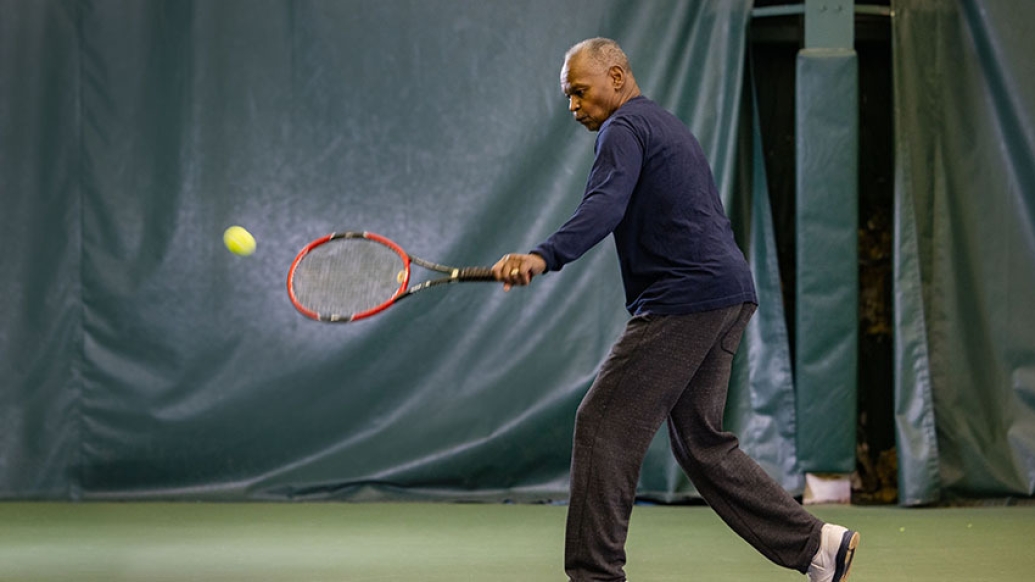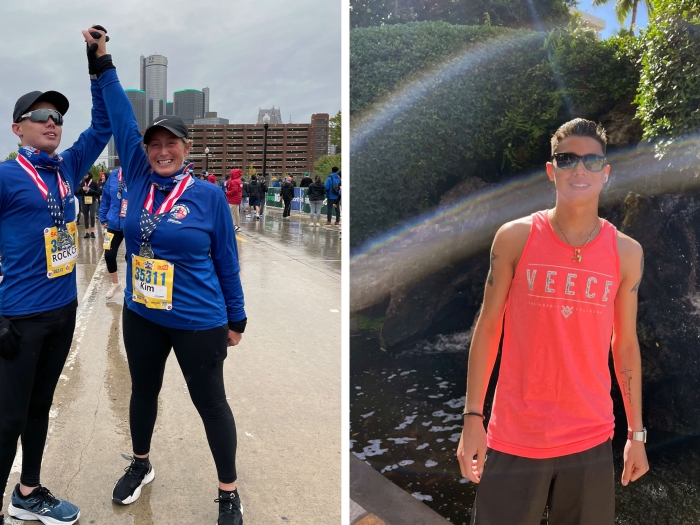The undiagnosed autoimmune disease was suddenly scarring the active 64 year-old’s lungs.
10:41 AM
Authors |

David Sloan, Jr. had always been active. At the age of 17 he started playing tennis and by 24 he would run two to five miles a day. Even at 64 years-old, Sloan would still spend a couple hours each day on the court or running outside.
Other than some sinus problems and allergies, Sloan had always felt like he had been in good health. That was, until he wasn't.
An unusual shortness of breath
In April, 2017, Sloan's wife, Terri, developed pneumonia, which Sloan ended up catching, too. Both recovered well and went on with their daily activities afterwards, but something changed for Sloan.
One day that spring, while he was outside doing yardwork, a friend pulled up to say hello. As Sloan walked over, they noticed he was having trouble breathing. Terri had been noticing his shortness of breath, too, lately and was becoming concerned. This was new, and unfamiliar, for Sloan.
"I was struggling to catch my breath when I would do anything slightly active, like going up a flight of stairs. Normal activities were causing me to stop to breathe," Sloan said. "I wasn't running as much as I was before I had gotten sick. I thought maybe I wasn't in shape and needed to build my endurance back up; things just weren't as easy."
MORE FROM MICHIGAN: Sign up for our weekly newsletter
By May 2017 Sloan was told by his physician to go to the local hospital to get checked out.
"My oxygen levels were at 84%, so I stayed at the hospital for a few days on oxygen. They discharged me with an appointment scheduled for a lung biopsy the following week," Sloan said, who admitted this was all very new to him. "I hadn't been to a hospital since I was born."
That's when his wife's pulmonologist referred him to the University of Michigan Health's pulmonary team for further evaluation.
The underlying issue
Sloan met with Margaret Salisbury, M.D., of the University of Michigan Health Division of Pulmonary and Critical Care Medicine.
"The first time we met she suspected an underlying autoimmune disease," he said.
Salisbury referred Sloan to Vivek Nagaraja, MBBS, an assistant professor of internal medicine in the Division of Rheumatology at University of Michigan Health.
"We performed additional testing and found Mr. Sloan had a rare autoimmune disease called myositis," Nagaraja said. "It results in inflammation and weakness of many muscles in the body and Mr. Sloan had rapidly progressive myositis mainly affecting the large muscles of the arms and thighs when he initially came to see me."
Nagaraja notes that the myositis had also affected Sloan's lungs.
"Many of the conditions we treat in rheumatology affect organs in the body, and with autoimmune diseases, the immune system turns against other parts of the body," he said. "Mr. Sloan had developed interstitial lung disease, or scarring and inflammation of the lungs, due to the myositis."
Nagaraja started treating Sloan right away with immunosuppressive therapies, which work to stop the immune system from attacking organs and tissues.
"The immunosuppressive therapies helped the muscle issues, but didn't help his lungs as we had hoped they would," Nagaraja said. "We were co-managing his care with the U-M Health pulmonary team and while the immunosuppressive therapies helped stabilize the lung disease to some extent, he still had significant damage."
After failing several tests, Salisbury recommended a double lung transplant.
"When she said I should be put on the transplant list I was surprised that the issues I was having weren't going to heal on their own," Sloan recalled. "That taking care of myself wasn't going to fix the situation and that was shocking to me. My mom is 96 and has never had any serious health issues, and my dad lived to be 90. I figured I had good genes."
Myositis and the double lung transplant
On October 18, 2018, Sloan got a call at 1 a.m. saying a set of lungs were available and that he needed to get to the hospital right away.
"I was never nervous," Sloan admitted, "but I was also so confident in the care I received that going there didn't make me worried or anxious. I always felt [as if] I was the only one there – they took such good care of me."
Sloan's transplant surgery was performed by Jules Lin, M.D., professor of thoracic surgery at U-M Health and the surgical director of the lung transplant program at the University of Michigan Health Transplant Center.
Like Podcasts? Add the Michigan Medicine News Break on iTunes, Google Podcasts or anywhere you listen to podcasts.
"A lung transplant is one of the most rewarding procedures we do as thoracic surgeons," said Lin. "To see a patient, like Mr. Sloan, come into the hospital on oxygen and struggling to breath be able to go home and get back to doing the things he wants to do, reminds me why I became a surgeon."
A set back
While still hospitalized after the surgery, Sloan started working on bringing his energy levels back up. "I eventually started exercising two times a day with the help of my care team," he said.
But it wasn't without some obstacles. A couple days after his discharge Sloan woke up in the middle of the night unable to breathe. He remembers paramedics coming to his home, but not much more.
"The next thing I know, I'm back at U-M Health and I couldn't remember anything, including how I got there," he says. "My wife said they had to ventilate me in order to save my life."
MORE FROM MICHIGAN: Sign up for our weekly newsletter
Sloan's pulmonary care team, led by Dennis Lyu, M.D., an associate professor of internal medicine in the Division of Pulmonary and Critical Care Medicine and the medical director of the Lung Transplant Program, found a mucus plug blocking Sloan's bronchial tubes.
"Mr. Sloan had a large mucus plug nearly completely blocking the main pipes in the right side of his lung," Lyu said. "By manually removing this obstruction with a bronchoscope we were able to allow air to easily flow back into his new lungs and get him off the ventilator."
Sloan says he felt comfortable with Lyu since he had performed some of his bronchoscopies before to clear out scar tissue and mucous build up.
"Whenever something was happening, the team all seemed one step ahead of the situation," Sloan remembered.
A fresh start with new lungs
Sloan finished his pulmonary and physical rehabilitation in December 2019. Fast forward to today and Sloan is back to doing many of the things he loves.
"I'm up to two activities per day," he said. "I ride my recumbent bike, use my elliptical, lifts hand weights and am always working towards small accomplishments to keep myself motivated to get to the next level."
Looking back on their experience, Sloan's wife says one thing in-particular stands out to her:
"I can truly say all of the University of Michigan Health doctors who have taken care of him have been outstanding," Terri said. "They all set a standard for me of what I look for in a doctor, and I'm so thankful for everyone that contributed to Dave's wellbeing."

Explore a variety of health care news & stories by visiting the Health Lab home page for more articles.

Department of Communication at Michigan Medicine
Want top health & research news weekly? Sign up for Health Lab’s newsletters today!





